When Korea’s Joseon Dynasty was founded in 1392, work began immediately to build Gyeongbokgung royal palace in Seoul (경복궁).
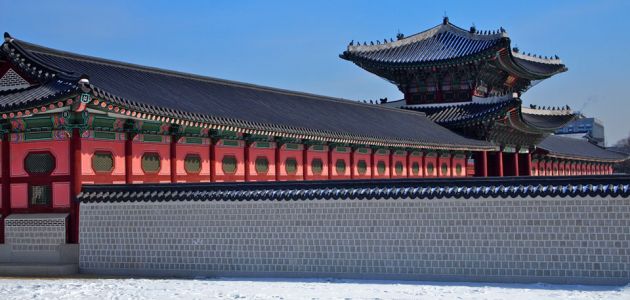
The area between Namsan (남산) and Bugaksan (북악산) mountains was deemed auspicious, so just three years later, Gyeongbokgung, or the “Palace Greatly Blessed by Heaven” was completed.
For the next 200 years, Gyeongbokgung royal palace in Seoul was the heart of the Yi Dynasty until it was destroyed by the Japanese invasions of the late 16th century.
Essentially abandoned over the next two and a half centuries, the palace was rebuilt in grand style in 1868. Over 300 buildings covering 64 hectares formed a small city.
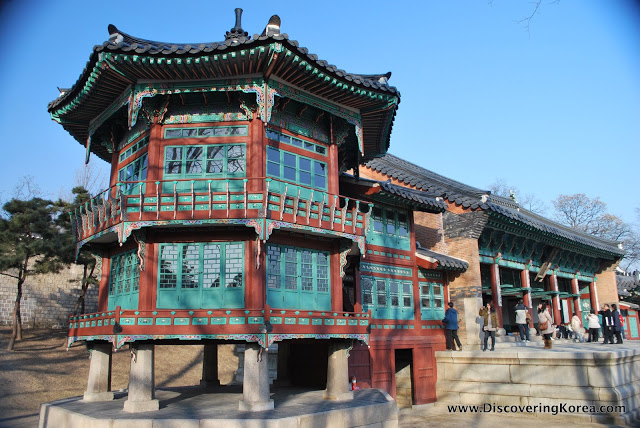
But in a cruel replay of history, Japanese colonial forces destroyed over 90% of the palace in 1915. To further humiliate the Korean people, an enormous Government-General building was erected in front of Gyeongbokgung to obscure it from view.
Since 1990, significant restoration to the Gyeongbokgung royal palace in Seoul has taken place, including the removal of the Government-General building in 2006, and the reconstruction of several palace structures.
Most of Gyeongbokgung’s important buildings lie along a central axis. This sight line links the recently repaired Gwanghwamun gate (광화문) with the main throne hall, Geunjeongjeon (근정전), the reception hall and the king’s residence.
Beyond being a beautiful example of Korean traditional architecture, Gyeongbokgung royal palace in Seoul also provides excellent insight into Korean culture.
For example, unlike the power emphasized by Chinese palace architecture, the Joseon aesthetic emphasizes grace. Each roof corner is fitted with a chunyeo (추녀), a curved rafter that raises the edge and prevents the roof from looking heavy.

The focal point of Gyeongbokgung royal palace in Seoul is the throne hall where Joseon’s kings were coronated and where affairs of state were conducted.
Four times per month, the king summoned all civil and military officials to the vast courtyard. To this day, stone markers designate where officials sat, resting on cushions made of leopard, tiger, sheep or dog skins, depending on one’s rank.
After climbing the stairs, visitors can peer into the hall. Inside, a towering ceiling is painted in remarkable detail with two golden dragons swirling at its center.
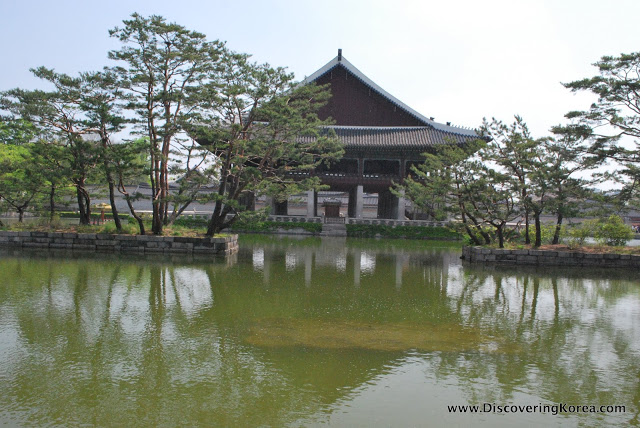
Gyeongbokgung royal palace in Seoul‘s western end includes a remarkable, two-story building called Gyeonghoeru (경회루).
Jutting out over a large pond, the graceful pavilion once held extravagant events and remains one of the Joseon-era’s most impressive structures, in my opinion. On a summer afternoon, large Asian carp swim lazily around the twin islands.
While not as imposing as Gyeonghoeru or the throne hall, the palace’s most beautiful building is Hyangwonjeong (향원정).
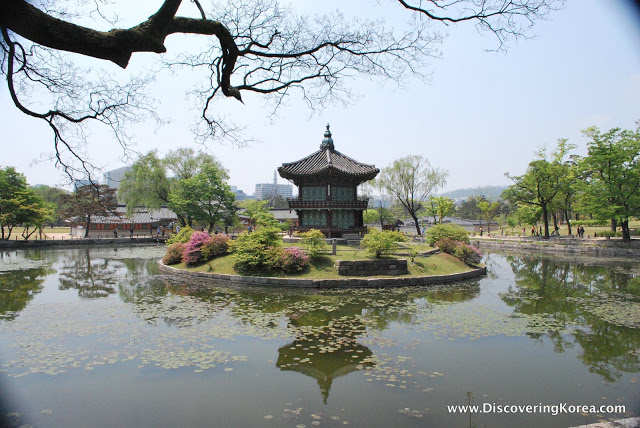
The delicate hexagonal pavilion is located on a small island and connected by a graceful footbridge. For some 600 years, a natural spring has filled the pond, whose placid surface reflects the pavilion and trees.
At the far north end of the Gyeongbokgung royal palace in Seoul grounds are more interesting buildings. Curiously, two were previously part of the Changdeokgung palace (창덕궁) complex.
Once used as a library and reception hall, Jibokjae (집옥재) and Parujeong (팔우정) incorporate many Chinese characteristics. Another notable building is Geoncheonggung (건청궁), a special palace within a palace built for King Gojong and his wife, Queen Myeongseong.
Tragically, the original site was where the queen was murdered by Japanese assassins in 1895. Recently rebuilt, it was opened to the public in 2007.
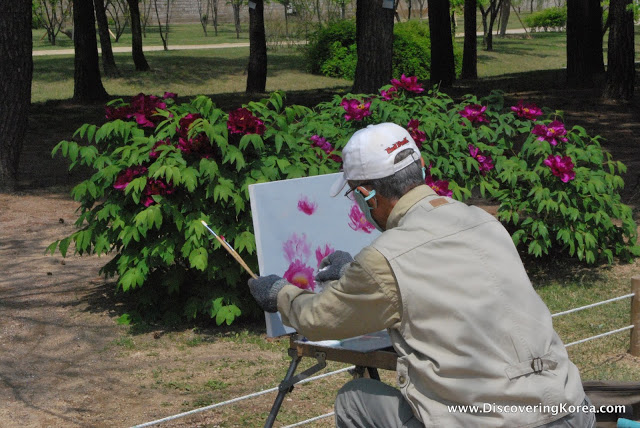
Also on site are the National Palace Museum (국립고궁박물관) and the National Folk Museum of Korea (국립민속박물관) . The latter, located beneath a blue-tiled, 5-story pagoda, features excellent exhibits on the history of the Korean people.
Signage is superb and access is free! Beyond the impressive buildings are long stretches of lawn punctuated by Korean pine, azaleas and peonies.
Taken as a whole, the Gyeongbokgung royal palace in Seoul is a wonderful example of Joseon-era Korea, and a must-see destination for every visitor to Seoul.
For Your Information…
| Open: | 09:00-18:00 (Mar-Oct), 09:00-17:00 (Nov-Feb), Enter 1 hour before close. Closed Tuesdays |
| Admission Price: | ₩3,000 |
| Address: | Seoul Jongno-gu Sejong-no |
| Directions: | Gyeongbokgung Station (#327) on Line 3, Exit 5 |
| Phone: | 02-3700-3900, 02-734-2457 |
| Website: | Official Site |
About Matt Kelley
Matt Kelly is native of the US Pacific Northwest and is half-Korean by ethnicity. He lived in Korea for five years and has written hundreds of travel guides for Wallpaper, TimeOut, the Boston Globe and Seoul Magazine and was a host for several different variety shows on Korean radio and television.
